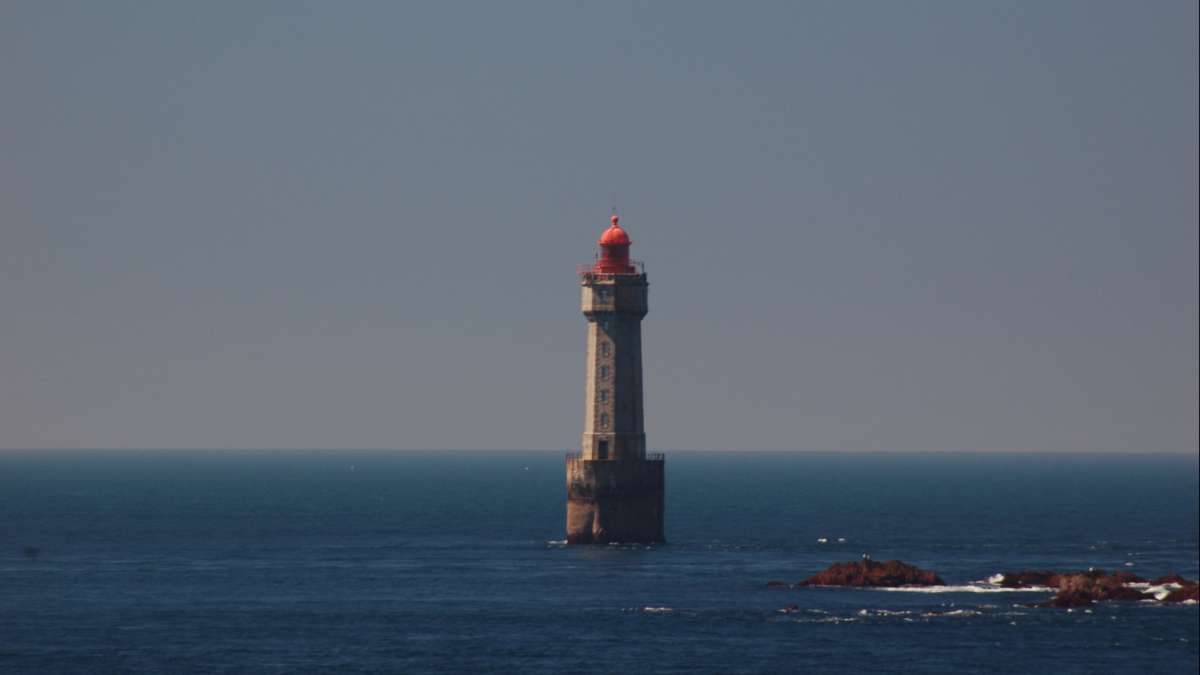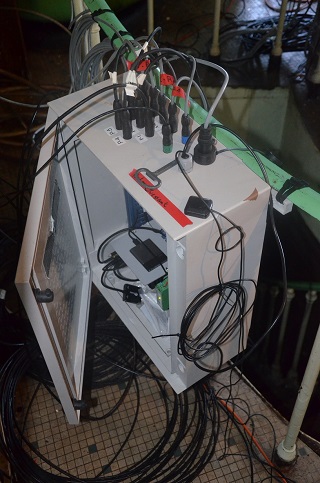
The French Lighthouse Service was founded in the first half of the 19th century, and it has worked to illuminate the French coast ever since.
When designing the lighthouses, the force generated by ocean swells was not taken into account, as the phenomenon was too poorly understood to obtain an accurate assessment. And so, these structures were built based solely on experience, with a single concept guiding the engineers: “build heavy” to withstand the waves.
There remains a lot uncertainty regarding how much force is actually experienced by lighthouses, making it impossible to be sure of their strength after more than a century of being battered by waves.
Studies of ocean swells, and reinforcement and instrumentation of the lighthouse

It was in this context that in 2013, the Swiss Federal Institute of Technology Lausanne (EPFL) conducted a study to model La Jument lighthouse. In actual fact, doubts about its stability were voiced as soon as its construction was completed in 1911, leading to a series of reinforcement works that are now almost 100 years old.
Naturally, Brest Lighthouses & Beacons (which manages La Jument) had cause to question the longevity of this reinforcement work, and so conducted a study to verify the strength of the lighthouse. Cerema [1] EPFL supervised the project on behalf of EPFL.
In light of the rather promising results obtained through the study, Cerema set out to further our understanding by exploring three different subjects:
-
A reinforcement project entrusted to Cerema (Materials and Transport Infrastructure) using the new modelling of the lighthouse, and supported by the application of French standards and coring to characterise the materials used.
-
A physical model in a wave tank at the Saint-Venant Hydraulics Lab (Chatou), to obtain digital estimates of the force generated by coastal swells.
-
Instrumentation installed in the lighthouse to gather particular environmental data (classification of the swell and the pressure experienced by the masonry) and to evaluate the structure’s dynamic response (oscillation of the tower) when subjected to extreme forces.
The latter subject is described below.
Instrumentation to measure the project’s 3 targets
The instrumentation will measure three phenomena:
-
Swell classification:As part of the DIME project, France Energies Marines installed stereo-cameras and an X-band radar on top of the lighthouse, along with a swell gauge buoy (DATAWELL) and a current profiler and wave directional system (AWAC) just offshore of the lighthouse.This made it possible to define sea state parameters, especially for breakers, by improving the quantification of the statistics obtained (probability, height…)
 Evaluating the forces generated by extreme waves, and breakers in particular. Measuring the exact distribution of pressure across the entire structure would require scores of sensors, at a cost that we would not be able to meet. Nevertheless, Cerema EMF decided to install 5 piezometric sensors positioned in line with the most likely location the strongest swell, and at the same height as where it would break.
Evaluating the forces generated by extreme waves, and breakers in particular. Measuring the exact distribution of pressure across the entire structure would require scores of sensors, at a cost that we would not be able to meet. Nevertheless, Cerema EMF decided to install 5 piezometric sensors positioned in line with the most likely location the strongest swell, and at the same height as where it would break.-
Lighthouse dynamic behaviour The study examined both archived documents and the 3D model that EPFL-MCS developed using DIANA software. The archived documents were found to contain natural frequencies (confirmed by two in-situ tests using seismographs in calm weather), as well as the main stress cracking diagrams. This data was used to estimate the acceleration force experienced by the lighthouse. However, due to the lack of data in extreme conditions (breaking swells), we were unable to accurately estimate the forces involved, nor the movement of the lighthouse in these critical situations. Installing acceleration sensors on the lighthouse will enable the model to be improved, and provide better insight into the structure’s reserves of loading capacity.
A world first
This research into the real stability of the lighthouse was a world first, due to the varied and relatively rare range of skills involved, given the unique history of the lighthouse (empirical design, successive reinforcements…) and its maritime nature (subjected to breaking swells).
What’s more, its recent listing as a French Historical Monument means that extra precautions must be taken before any future work (installation of instrumentation, coring, etc.)
[1] Cerema water, sea and rivers engineering division

